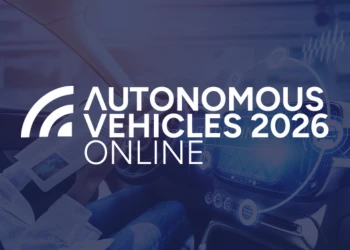Component failures caused by software discrepancies - part II
Add bookmarkThe $1.2 billion fine handed out to Toyota over the unintended acceleration saga remains a record within the automotive industry, but other manufacturers have all been experiencing problems of varying scale.
General Motors Faulty Ignition Switches
A more recent and equally high-profile scandal involved GM and the settlement over faulty ignition switches which were linked to several fatalities. The automaker was fined $900 million in 2015 as a settlement, having known about the defect for a decade and hiding it from regulators. The faulty switches in 2 million recalled cars could potentially suddenly turn off, stalling the engine, disabling steering and brakes, and disabling airbags. The settlement has heralded a new era at GM, with the appointing of a high-ranking safety czar and an increase in product safety investigators.
These two cases and settlements have spurred the automotive industry into a new approach to recalls and safety, one which is more proactive and which intends to resolve issues at the earliest opportunity. This will be critical in terms of reputation and consumer confidence, particularly as drivers are asked to rely more and more on the software within vehicles.
Pattern of Software-related Recalls
A quick tour through some of the latest recalls reveals that almost no manufacturer is untouched by the problem, and that software issues can result in a variety of different failures.
Just last year General Motors recalled another 4.3 million vehicles worldwide due to a software fault that could prevent airbags from deploying during a crash. The NHTSA said that "certain driving conditions may cause the airbag sensing and diagnostic module software to activate a diagnostic test" which would prevent the airbag from activating and deploying during a crash. After receiving reports of crash in May involving a Chevrolet Silverado truck, GM opened an investigation in June. Testing was carried out at its Milford Proving Grounds in August, before the recall was issued in September.
Volvo recalled 59,000 cars in 2016 due to a software issue that caused the vehicles to stop and restart while driving. 97% of the cars were in Europe, with Volvo confirming that the fault may cause the engine and vehicle electronics to restart during the course of a second while driving, but that they’d had no reports of accidents.
Image source: Fotolia
It’s a similar story across the industry, with Ford involved in a recall in 2015 affecting 433,000 vehicles that owners couldn’t switch off even if they removed the key. Toyota were also affected in 2015 with a recall involving 625,000 Prius cars worldwide due to a software fault which led to engines suddenly cutting out.
Over-the-air Updates
Manufacturers will strive to improve software development and functional safety systems, but it remains that recalls will always be part and parcel of the industry. Another aspect to consider is the way in which recalls, repairs and software upgrades are dealt with in order to reduce costs.
The usual routine is for a customer to take their vehicle to the nearest dealership to have warranty or recall repairs carried out. This comes at significant cost to the OEM and inconvenience to the owner. However, a clear advantage can be gained by using over-the-air updates to upgrade software at minimal cost and minimal disruption the the vehicle owner. Estimates from ABI research forecast that almost 203 million Software Over-the-Air (SOTA) vehicles will be shipped by 2022. The research groups suggest that OEMs will concentrate on SOTA rather than Firmware-Over-the-Air (FOTA) in the next three to five years. Both will see an increase, with SOTA-enabled vehicles set to reach 180 million, and FOTA vehicles to reach 22 million by 2022.
The research cites some significant figures in terms of potential savings for automakers. In the two years prior to the results being published in 2016, ABI state that the recall rate had increased to 46% with four manufacturers setting aside a budget of $20 billion in 2015 for warranty reserves alone. Market analysis from the research firm suggested that roughly a third of all recalls in 2015 could have been rectified by over-the-air updates, which could have saved OEMs at least $6 billion.
The research also cited a case in 2015 where Fiat Chrysler distributed a software patch for approximately 1.4 million vehicles by sending USB sticks to customers in the post. The update was in response to an attack in which two hackers revealed they had been able to remotely take control of a Jeep Cherokee via its internet-connected infotainment system. The move was widely criticised for a lack of security, owner identification, and the possibility that the update might not be installed correctly. Security experts also warned of the possibility of hackers imitating the letters and ‘fishing’ for victims that might inadvertently add rogue patches to their vehicle.
Over-the-air updates provide a much more secure method of upgrading software, and a way to manage all of a car’s connected software in a fully-integrated manner.
Summary
The progressive electrification of vehicles has led to huge advances in safety and driver assistance systems, as well as convenience and comfort. Ever-more sophisticated E/E systems may have turned out cars into mobile computers, but just like our computers they are susceptible to bugs and glitches in complex software. The automotive industry must address issues of software failure and ensure that functional safety systems are robust. If the consumer is to be convinced that autonomous vehicles are the future, they must first become comfortable with ADAS and semi-autonomous driving. Further high-profile problems could not only damage reputation and create cost, but also damage consumer confidence.
As connectivity improves, and SOTA-enabled cars are introduced, over-the-air updates will become as common as PC or phone updates. This will save the automotive industry huge sums in warranty and recall costs, but may also contribute to increased consumer confidence in electrical and autonomous systems.
Read part I of this article here





















